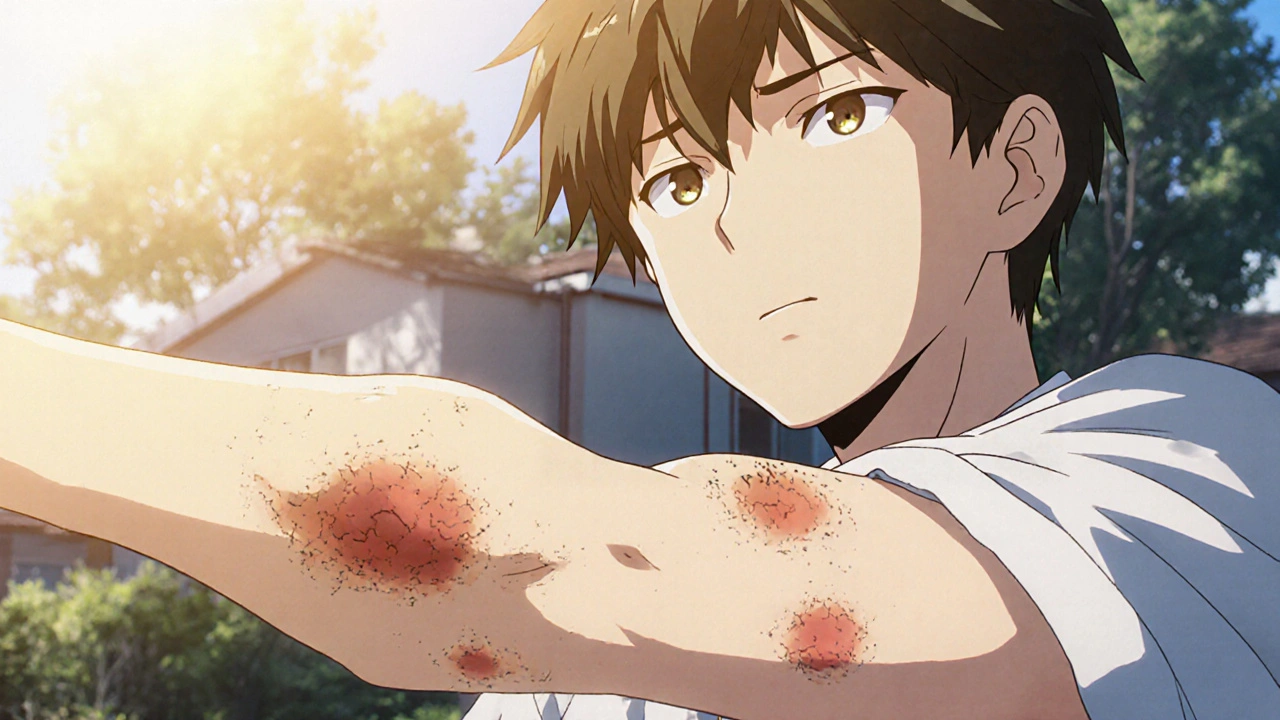Actinic Keratosis: What You Need to Know
When dealing with actinic keratosis, a rough, scaly patch that appears on sun‑exposed skin and can turn into cancer. Also called solar keratosis, it signals early damage from ultraviolet radiation. Another key player is sunscreen, a topical barrier that blocks UV rays and reduces new lesions, commonly referred to as sunblock. Effective care often involves topical fluorouracil, a chemotherapy cream that destroys abnormal cells, also known as 5‑FU. All of this falls under the expertise of dermatology, the medical specialty focusing on skin health and disease, sometimes called skin medicine.
Actinic keratosis usually shows up as a small, firm bump or a reddish‑brown patch on the face, ears, scalp, neck, or hands—any area that gets a lot of sun. The main cause is chronic UV exposure, whether from outdoor work, beach vacations, or years of unprotected daily sunshine. Think of it as the skin’s “warning sign” that the DNA in surface cells has been damaged. If you ignore it, the lesion can progress to squamous cell carcinoma, a type of skin cancer that is still highly treatable when caught early.
Why Actinic Keratosis Matters
Ignoring actinic keratosis is like leaving a small crack in a windshield unattended; it can spread and compromise the whole pane. Dermatologists emphasize three core strategies: prevention, early detection, and targeted treatment. Prevention hinges on daily sunscreen use—broad‑spectrum SPF 30 or higher shields skin from both UVA and UVB rays, dramatically lowering the chance of new lesions. Early detection involves regular self‑checks and professional skin exams; a dermatologist can spot subtle changes that you might miss. When a lesion is identified, treatment options range from topical creams (fluorouracil, imiquimod) to procedural approaches like cryotherapy, photodynamic therapy, or laser ablation.
Each treatment works differently. Topical fluorouracil acts at the cellular level, causing abnormal cells to die and peel away over weeks. Cryotherapy freezes the lesion with liquid nitrogen, offering a quick fix for isolated spots. Photodynamic therapy combines a light‑sensitive drug with a specific wavelength of light, targeting larger or harder‑to‑reach areas. Choosing the right option depends on the number of lesions, their size, patient preference, and any underlying health conditions—exactly why dermatology consultation is essential.
Beyond the medical side, lifestyle tweaks help keep actinic keratosis from returning. Wearing hats, UV‑protective clothing, and seeking shade during peak sun hours (10 am–4 pm) provide extra layers of defense. Some studies show that antioxidants like vitamin C and E, applied topically or taken as supplements, may reinforce skin’s repair mechanisms, though they should complement—not replace—sunscreen.
If you’re wondering how to spot actinic keratosis on yourself, look for rough, sandpaper‑like textures, a persistent redness, or a scaly surface that doesn’t heal after a couple of weeks. Any new or changing spot on sun‑exposed skin deserves a quick glance from a dermatologist. The earlier you act, the simpler the treatment and the lower the risk of progression.
Below you’ll find a curated list of articles that dive deeper into the science, treatment choices, and preventive habits surrounding actinic keratosis. Whether you’re a patient, a caregiver, or a health professional, these resources will give you practical steps and up‑to‑date information to manage this condition effectively.

